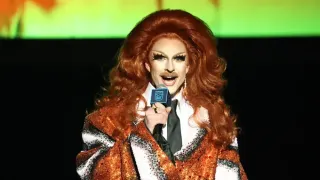February 28, 2023
'Kids On the Street' - Joseph Plaster's Queer Tenderloin History
Laura Moreno READ TIME: 4 MIN.
An important new scholarly book, "Kids On the Street: Queer Kinship & Religion In San Francisco's Tenderloin" by Joseph Plaster, has unearthed queer history that has long remained hidden. Tracing the history beginning in the late 1800s, the author researched the downtown lodging house districts, temporarily home to numerous outsider youths, to document their history from the 1950s to the present time.
The book is based on 70 oral histories conducted from 2007 to 2011 in the Tenderloin District by the author in conjunction with the San Francisco's GLBT Historical Society. In addition to personal histories, the book utilizes an interdisciplinary approach that draws upon archival, ethnographic, and humanities research to gain an understanding of the elaborate queer kinship networks and migratory patterns that enable this population to benefit from mutual aid.
The author's ethnographic research found that many such red-light districts dot the landscape in cities throughout the country. While recent LGBTQ narratives have often centered around marriage and gay family life, the actual lived history historically has been very different.
"I think I'm interested in Polk Street," author Joseph Plaster writes, "because it's a place where people who don't fit in in other parts of the country can find a home."
To quote from the book first chapter, "By the late nineteenth century, cities constructed these districts as zones of abandonment where the degradation and immorality associated with the poor, sexual and gender deviants, and racialized populations could be contained and cordoned off from respectable white families and homes."
To better understand this population, the book delves into four main social phenomena: "street families," or queer kinship networks; "street churches"; performative storytelling to help find work and deal with abuse; and migratory circuits connecting various cities. These loose structures enable this population to organize to collectively manage social trauma and confront the poverty and stigma they face every day on the streets.
Their migratory world, called the "scene," has an energy of its own many find hard to escape. It is described by insiders as a "magnet," "vortex," or "whirlpool." It is filled with stock characters such as the queen, the hustler, the urban cowboy, and the body language of sexual availability.
But tried and true ways this population had developed for coping with their "performative economy" began to be seriously undermined starting in the late 2000s with the seismic changes wrought by the development of Silicon Valley.
"Gentrification was erasing a history I had come to San Francisco to claim and become a part of. I became obsessed with 'saving' the street's history before it was swept away," Plaster writes.
One of the most interesting aspects of this book is "the value of sociality and sexuality untethered from the nuclear family, reproduction, and the gender binary and dramatized their moral vision on the streets and boulevards in spectacular fashion."
Joseph Plaster, PhD is Curator in Public Humanities and Director of the Winston Tabb Special Collections Research Center for the Sheridan Libraries & University Museums at JohnsHopkins University. His research has appeared in many journals, including The Public Historian, Radical History Review, The Abusable Past, and Kalfou: A Journal of Comparative and Relational Ethnic Studies, and has been supported by grants from the National Endowment for the Humanities, the Mellon Foundation, and fellowships from The New York Public Library and The Graduate Center of CUNY.
An excerpt:
"Kinship and religion – the very cardinal forms of sociality that are often placed in opposition to queer world making – are common frames through which street kids expressed mutual obligations and reciprocities. The social formations my informants call "street families" resemble the moral economies common among marginalized people with limited resources.
"People living at bare subsistence create patterns of reciprocity, pool resources, and create extensive networks of kin to ensure mutual survival. Carol Stack showed how African American families living at bare subsistence in central city districts establish 'socially recognized kin ties' with people not related by blood to 'maintain a stable number of people who share reciprocal obligations.'
"They are adaptive institutions developed for coping with poverty. Street families served a similar function, but with a queer twist. The kids sexualized their kin relations, producing what Lauren Berlant and Michael Warner call 'criminal intimacies,' relations and narratives 'that are only recognized as intimate in queer culture,' including 'girlfriends, gal pals, fuckbuddies, tricks.'
"Drawing on my research, I would add, more incestuously, daddy, uncle, son, and mother – and, not least, the 'Holy Father. People in the scene drew on these relations to elaborate a world of belonging and transformation.'
'Kids On the Street: Queer Kinship & Religion In San Francisco's Tenderloin' by Joseph Plaster, Duke University Press, $28.95, Kindle $15.63 www.dukeupress.edu www.josephplaster.com
Help keep the Bay Area Reporter going in these tough times. To support local, independent, LGBTQ journalism, consider becoming a BAR member.






